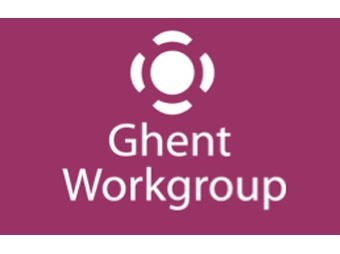The Ghent Workgroup (GWG) is spearheading a crucial initiative, with support from Kodak, Esko, IDEAlliance and the Flexographic Technical Association (FTA); to insure that premedia and print professionals understand that standards are vital to their survival. GWG work efforts include contributions to Technical Committee (TC) 130, appointed by the ISO (International Organization for Standardization), to develop working standards for graphic technology(1).
Both Kodak and Esko have asked GWG experts to educate their members regarding the need to use standards at their forthcoming user conferences.
Kodak Graphic User Association, June 3
The first presentation is being held at the Kodak GUA (Kodak Graphic User Association) meeting taking place this week in San Antonio, TX.
Session Time: Wednesday, June 3 at 2:30pm
Title: Print Standards and Specifications: Turning Stress Into Success
Presenters: Jason Lisi, Associate Professor, Ryerson University and GWG Documentation Officer; Steve Carter, Senior Vice President of Technology, Photoype and GWG Co-Chairman, Packaging Subcommittee
EskoWorld User Conference, June 15
The second presentation will take place at the EskoWorld User Conference taking place June 14-16 in Scottsdale, AZ.
Session Time: Monday, June 15 at 11:00am
Title: Why Should You Care About PDF Standards?
Presenters: Lieven Plettinck, Director Software Engineering, Esko and GWG Co-Chairman, Packaging Subcommittee; Steve Carter, Senior Vice President of Technology, Photoype and GWG Co-Chairman, Packaging Subcommittee
“Those who do not utilize the GWG standards,” says GWG chairman David L. Zwang, “are finding that they are drifting away from high-paced centers of industry activity. They aren’t as fast as their peers, they are unable to automate efficiently, and they are generally not seen to be the frontrunners they might have been, before.”
“GWG standards, specifications, and other deliverables are free; and not difficult to implement,” says Esko’s Plettinck. “Downloading and using the standards is not something to be intimidated by. Yes, standards groups have to use some million dollar words, but the truth is that it is simple stuff, and the value is tremendous.”
Both sets of presenters will bring some humor into the presentations by sharing images, for example, of traffic lights that turn purple; and the #funnynotfunny threat of non-standard tires being installed on a Lamborghini.
“We will remind people of the countless ways standards make life easier and safer,” says Lisi, the Ryerson University Associate Professor who is presenting with Carter at the Kodak meeting. “People don’t always realize that we are surrounded by them.”
The session agenda is as follows:
* Overview of standards, specifications and variants
* Why you should care about standards and specifications
* How standards and specifications can help you
* Conclusion and Q&A
“It’s hard to find an instance where a standard hasn’t been developed to save money, time, or lives,” Carter says. In the case of the GWG standards, test suites, and other deliverables, real money and time are being saved.
Only a handful of the other 294 technical segments managed by the ISO have their roots in something other than pure technology, like graphic arts; and so Carter says that it makes sense for the graphic arts community to be reticent about incorporating standards such as those reserved for information technologies. “Digital is here, and staying,” he says, “and if you want to compete, you have to use the same—or better—tools used by those who are winning.”
For more information about the GWG, including a full list of its members and objectives, visit www.gwg.org. Follow GWG on Facebook for news, events, and more, at http://www.facebook.com/GhentWorkgroup.
(1) Technical committees are the groups of experts that develop standards. They consist of representatives from industry, NGOs, government and other stakeholders, who are put forward by ISOʼs members. ISO (International Organization for Standardization) is an independent, non-governmental membership organization and the world’s largest developer of voluntary International Standards. It is made up of its 163 member countries who are the national standards bodies around the world, with a Central Secretariat based in Geneva, Switzerland.











